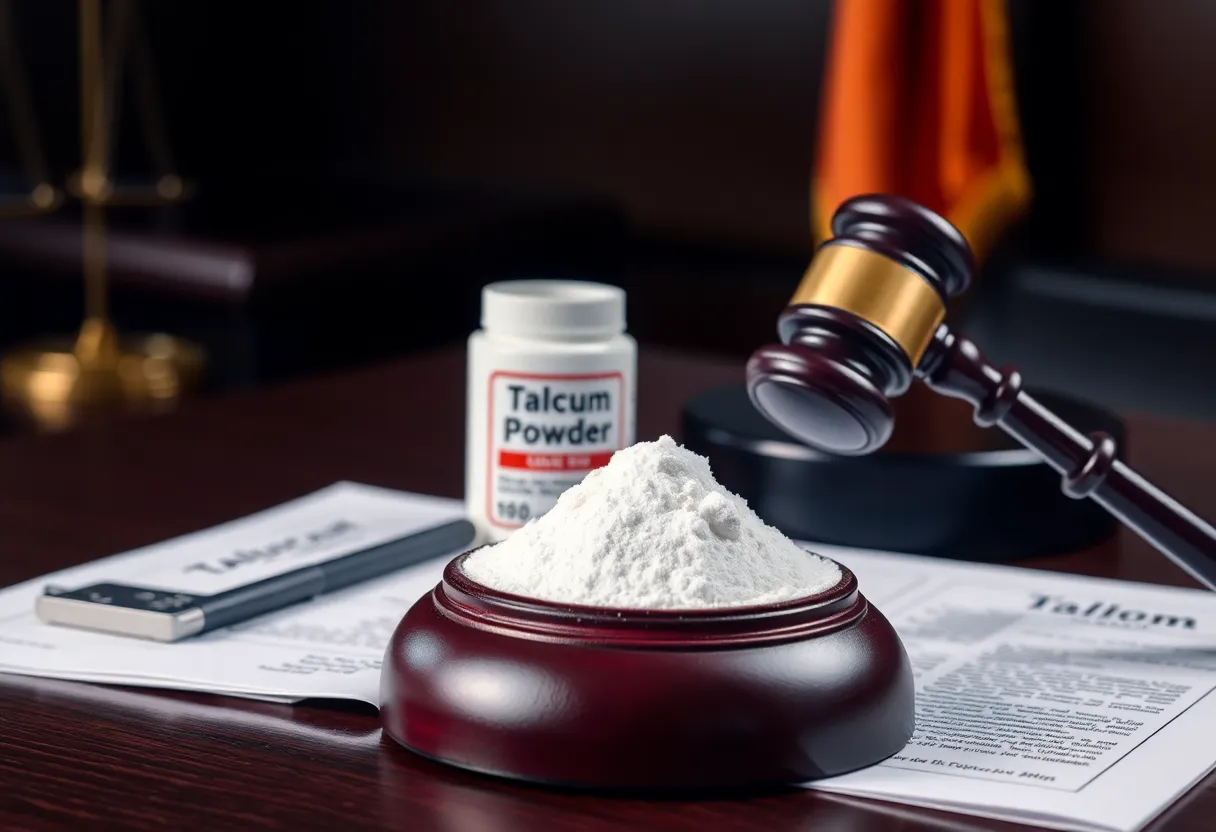News Summary
As Legal Storms Brew Over Talc Products, New FDA Rules May Change the Landscape
As the chilly winds of February 2025 blow across the northeastern United States, the legal landscape surrounding talcum powder is heating up. While the weather forecast predicts cloudy skies and snow showers will blanket the region during the morning hours with a high of 32°F, the courtroom battles over talc-related health issues are set to escalate, particularly with the current discussions surrounding Johnson & Johnson’s baby powder.
Ovarian Cancer and Talcum Powder: An Increasing Concern
In recent years, there has been a surge of concern regarding the link between talcum powder and serious health issues, particularly ovarian cancer. Experts, including OB/GYNs, are stressing the urgency for answers to inquiries about the potential risks associated with long-term talcum powder use. With studies dating back to the 1960s suggesting a connection between talc and ovarian cancer, the pressure is mounting for regulatory clarity.
Proposed FDA Regulations Aim to Lift the Veil
In response to these health concerns, the FDA has proposed a new rule aimed at establishing standardized testing for talc-containing personal care products. This follows the action taken by Congress in 2022, which granted the FDA expanded authority to oversee cosmetics and personal care items. The proposed regulations come at a crucial time, as there is a pressing need to certify that these products are free of asbestos—a naturally occurring mineral known to accompany talc in certain rock formations.
Shifting Demographics Among Plaintiffs
Lawsuits related to talc injuries are projected to spike, with filings expected to rise from 11% in 2019 to 18% in 2024. The demographics of the plaintiffs have also shifted dramatically; while older male workers were previously predominant in asbestos-related lawsuits, younger women, frequently utilizing talc products, are now at the forefront of these legal battles. The support for these claims is evidenced by the remarkable success rate in trials, where approximately 80% of cases go in favor of the plaintiffs.
Local Lawsuits and Major Verdicts
Recently, lawsuits have been initiated in counties such as Albany, Rensselaer, Saratoga, and Schenectady against major cosmetic companies, including Coty, Estee Lauder, and Maybelline. Over the past year, over $492 million has been awarded in verdicts involving talc-related lawsuits. This considerable sum highlights the significant financial and emotional toll that these legal disputes have on families affected by the use of talcum powder products, in addition to the growing public interest in health safety regarding personal care items.
The Johnson & Johnson Settlement and Its Implications
The legal repercussions for Johnson & Johnson are noteworthy. The company reached a coalition-backed settlement nearing $700 million, with New York Attorney General Letitia James announcing that the state would receive $44 million. As part of this settlement, Johnson & Johnson is prohibited from manufacturing talcum powder products, effectively altering the future of its long-standing baby powder brand, which has been in the market since 1894.
Looking Ahead: Potential Impact of FDA Regulations
The FDA has begun testing talc-containing products, with preliminary results from 2023 revealing no asbestos presence in the 50 products tested. However, the public comment period for the FDA’s proposed rules is open until March 27, which will provide an opportunity for communities and health advocates to voice their concerns and influence the regulatory framework moving forward.
A Community Impact: Targeting Vulnerable Populations
The troubling trend of marketing talc products towards specific communities, particularly in beauty salons and churches within communities of color, raises additional ethical questions regarding consumer safety. The characterization of talc as a dangerous ingredient by the Office of the Attorney General lends credence to the health risks associated with these products. As marketing strategies become increasingly scrutinized, the anticipated legal outcome could bear significant implications for consumer rights and protections.
Amidst the shifting weather patterns and growing legal challenges, the atmosphere surrounding talc and asbestos-related cases continues to evolve. As February marches on and more data emerges, clarity and resolution may be around the corner—or further complications could lie ahead in this ongoing saga.
Deeper Dive: News & Info About This Topic
HERE Resources
Exciting Developments on the Horizon for Springfield Crossing
Le Mars City Council Faces Critical Asbestos Decision Ahead of Centennial Building Demolition
A Mammoth Legal Challenge Against Johnson & Johnson Over Talcum Powder as 3,500 Claimants Step Forward
Asbestos Traces Linger: The Long Shadow of 9/11 on Public Health
Rising Concerns Over Silicosis Compensation Claims in the UK
Middlesex County Library Undertakes Major Asbestos Removal
Asbestos Exposure and Mesothelioma: A Growing Concern for Veterans
The Forgotten Heroes: Veterans’ Battle Against Asbestos Exposure
Federal Proposal Aims to Address Asbestos Risks in Talc-Containing Cosmetics
Thalia Mara Hall’s Reopening Faces New Delays Due to Potential Asbestos Discovery
Additional Resources
- News10: New York Gets $44 Million from Johnson & Johnson for Baby Powder
- Wikipedia: Talc
- Reuters: NY High Court Overturns $165 Million Asbestos Verdict
- Google Search: Asbestos Health Risks
- WRRV: Toxic Dragon Claws Skunk Cabbage NY
- Google Scholar: Talc Ovarian Cancer
- Encyclopedia Britannica: Talc
- Google News: Talc Lawsuits



















